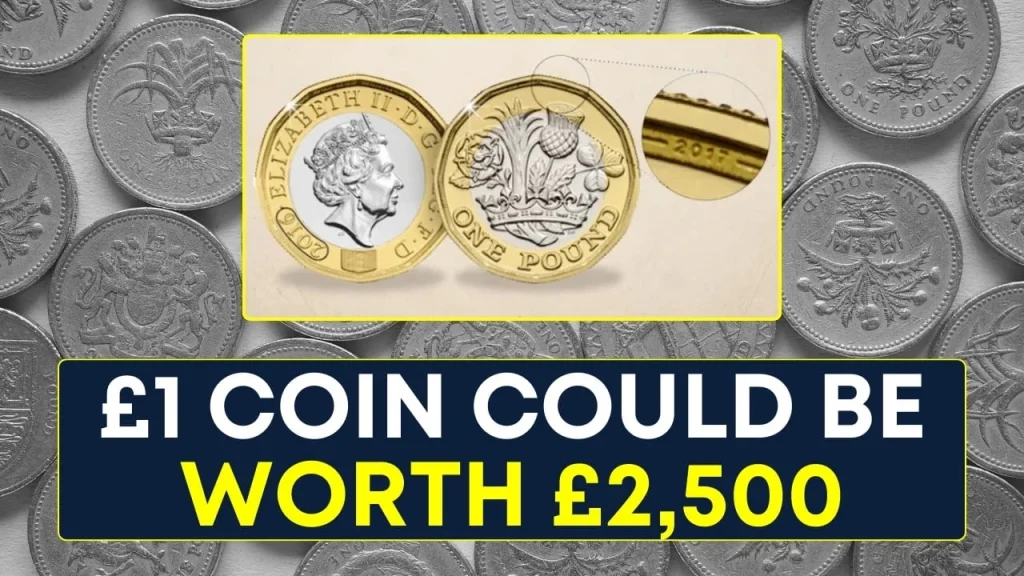Have you checked your wallet, piggy bank, or forgotten drawers lately? You might be unknowingly holding onto a rare £1 coin worth significantly more than its face value. Due to a minting error, a select few £1 coins have gained immense value among collectors, with some selling for as much as £2,500. Here’s everything you need to know to identify these sought-after coins.
What Makes These £1 Coins Special?
This Article Includes
The coins in question are 12-sided £1 coins introduced in 2016 to replace the older round pound coins. Designed with multiple security features to prevent counterfeiting, these coins also brought along an accidental quirk that turned them into collector’s items. The minting error involves mismatched dates—one on the coin’s face and another in micro-lettering on its rim.
This discrepancy has made these coins exceptionally rare, catching the attention of coin enthusiasts and investors alike.
The Unique Minting Error Explained
The key to identifying these valuable £1 coins lies in the dual-dating error. Here’s what to look for:
- Face Date: The front of the coin features a portrait of Queen Elizabeth II alongside the year 2016.
- Rim Micro-Lettering: The rim of the coin has a tiny engraved date, which in some rare cases reads 2017 instead of matching the 2016 date on the face.
This inconsistency occurred during the transition from round to 12-sided coins, making these errors a fascinating piece of modern minting history.
How to Identify the Rare Coin?
Want to check if your £1 coin is one of these valuable treasures? Follow these simple steps:
- Gather Your Coins: Look for 12-sided £1 coins minted in 2016 or later.
- Inspect the Face: Find the date stamped near the portrait of Queen Elizabeth II. You’re looking for the year 2016.
- Examine the Rim: Closely inspect the coin’s edge. The date here is engraved in very small micro-lettering. Use a magnifying glass or microscope to spot the year.
- Confirm Dual-Dating: If the face shows 2016 and the rim reads 2017, you have a rare dual-dated £1 coin.
Why Are These Coins So Valuable?
Collectors are drawn to the rarity and uniqueness of coins with minting errors. Typically, coins are produced with meticulous accuracy, so any deviation from the norm can significantly increase their value.
The dual-dated £1 coins represent a unique minting anomaly, making them highly sought after by collectors. One such coin was sold to a collector in Spain for £2,500, underscoring the substantial demand for these rarities.
Expert Advice on Checking Your Coins
Experts recommend using tools like magnifying glasses or microscopes to identify the micro-lettering on the rim of these coins. The lettering is faint and difficult to spot with the naked eye. As explained by coin collectors, finding this error may require patience, but the financial reward could make the effort worthwhile.
Tips for Collectors and Sellers
If you find a dual-dated £1 coin, here’s what you should do:
- Authenticate the Coin: Before selling, have the coin verified by a professional coin grading service to confirm its authenticity.
- Research Market Value: Check recent sales of similar coins to understand current market demand.
- Consider Auctioning: Rare coins often fetch higher prices in auctions where collectors can bid against each other.
- Preserve Its Condition: Store the coin in a protective case to maintain its value.
Why Should You Check Your Change?
Even with their rarity, some of these error coins might still be in circulation. Taking a closer look at your spare change could lead to a valuable discovery. Coins like these not only hold monetary value but also represent a piece of minting history.
As the transition to 12-sided £1 coins marked a significant effort to combat counterfeiting, this minting error offers a glimpse into the challenges and quirks of modern coin production.
Final Thoughts
The dual-dating error on £1 coins has turned an everyday object into a collector’s dream. While the odds of finding one are slim, the potential reward is substantial. Take a moment to inspect your £1 coins—your next cup of coffee could turn into a life-changing find!
